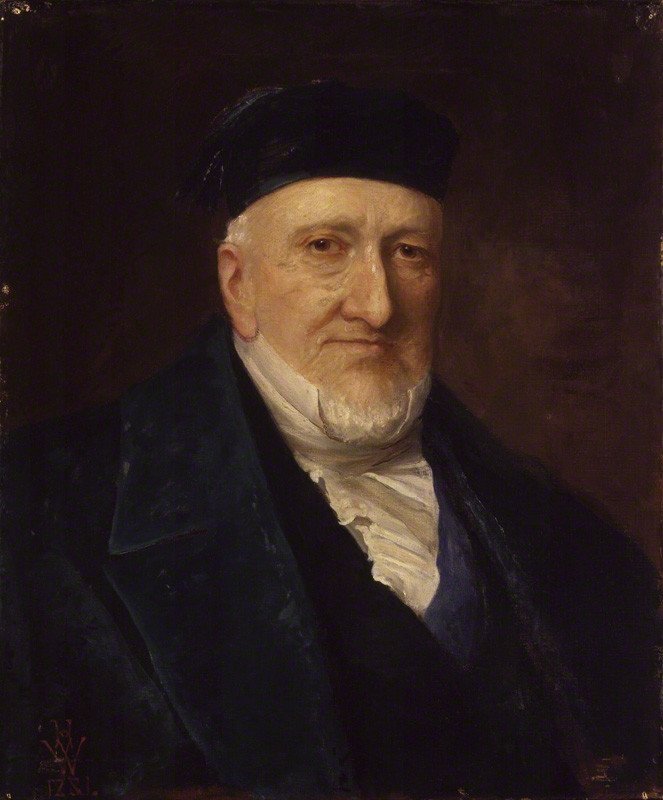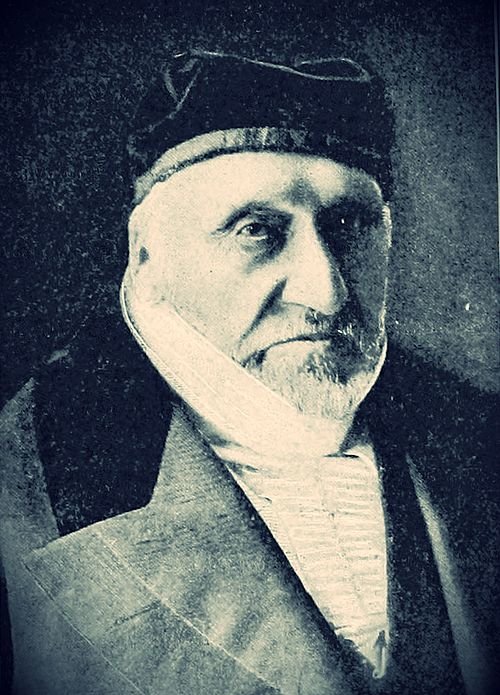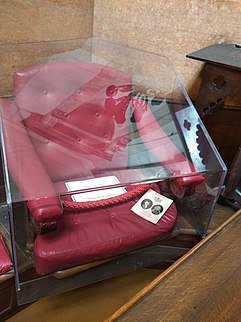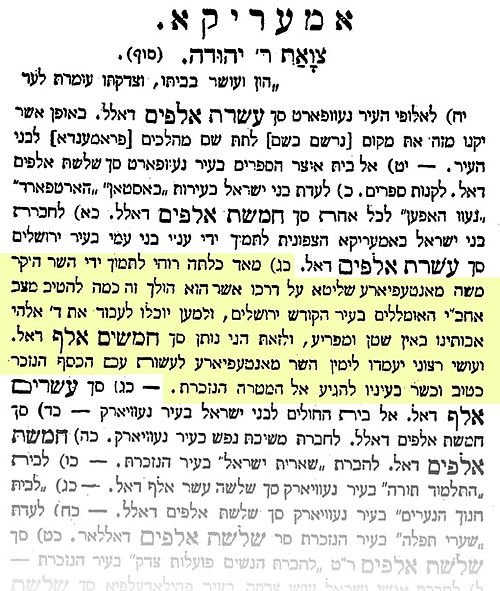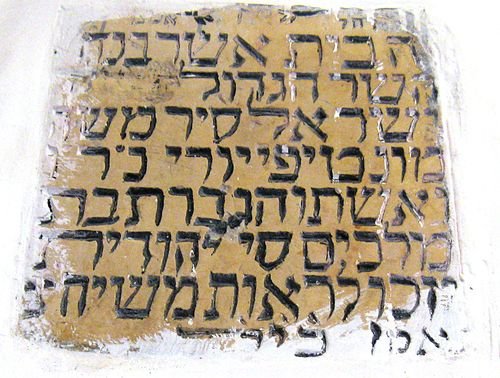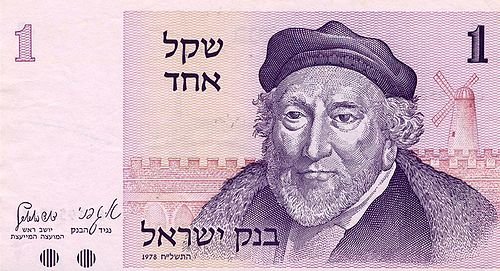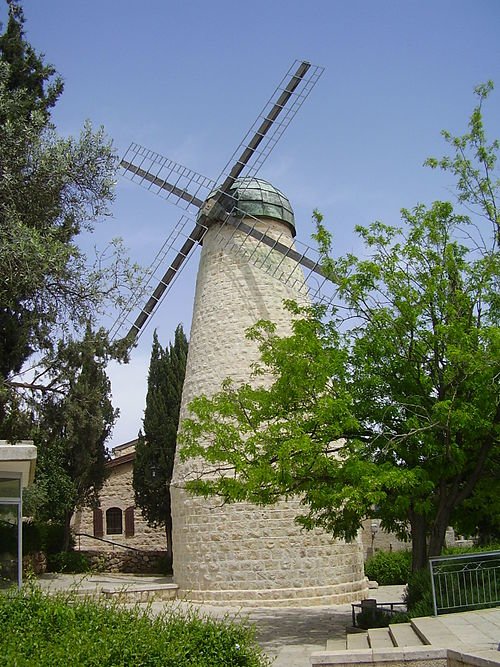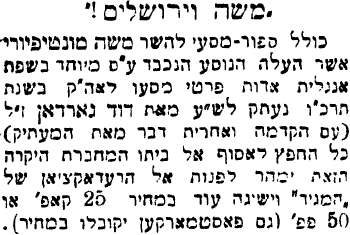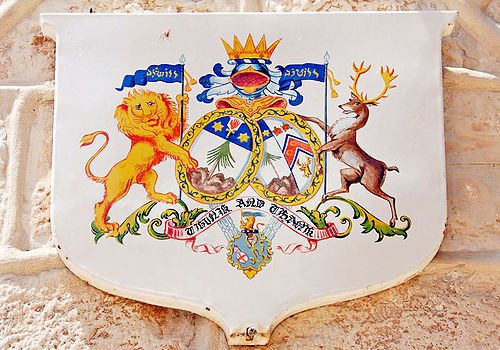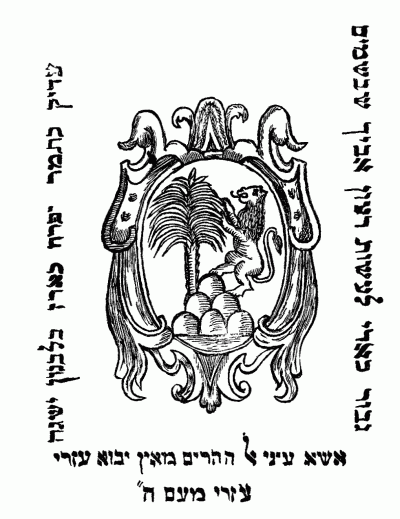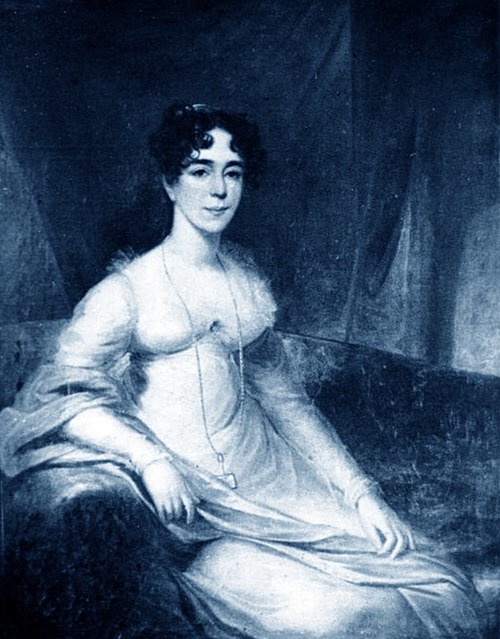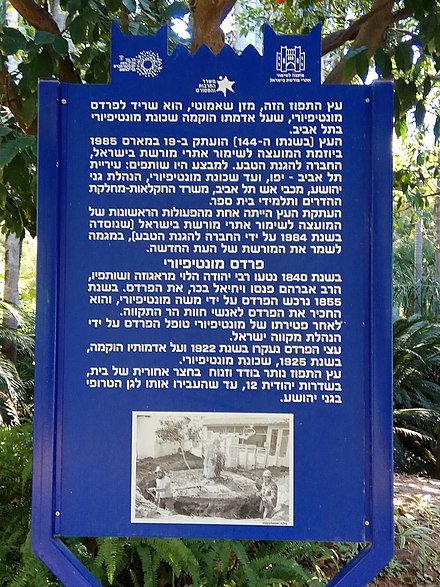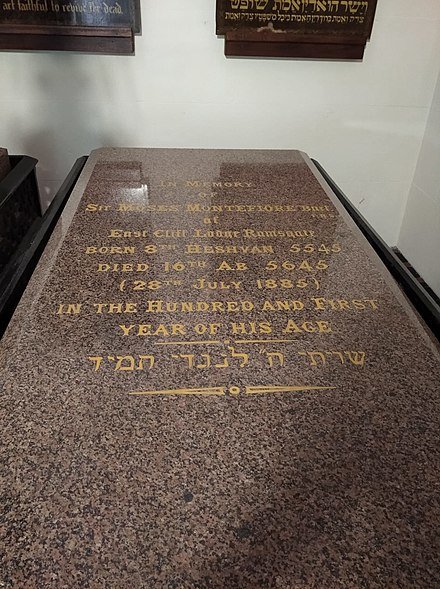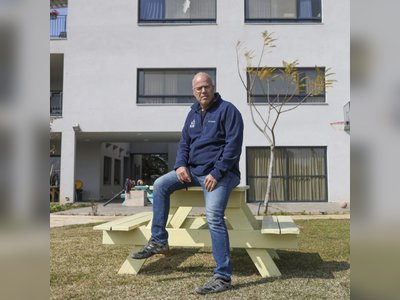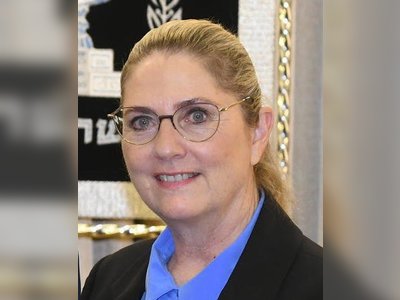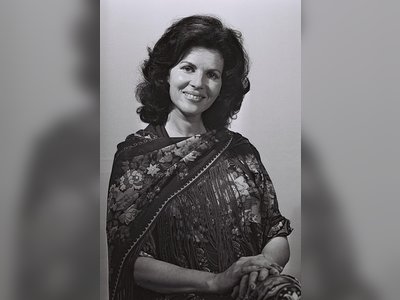מורשת גדולי האומה
בזכותם קיים
beta
Sir Moses Haim Montefiore: A Lifelong Champion of Jewish Communities
Sir Moses Haim Montefiore, 1st Baronet, Kt, was a dedicated and influential English Jew who devoted his life to assisting Jewish communities across various lands. Known as "HaSar Moshe Montefiore" in Hebrew, a title signifying an esteemed public figure, and also as a translation of the nobility title bestowed upon him by Queen Victoria in 1837.
Early Life:
Montefiore was born in Livorno, Italy, on October 24, 1784, to a Sephardic Jewish family with roots in England, where he was raised and educated. He excelled in trade during his youth, becoming one of the 12 Jewish brokers on the London Stock Exchange. In 1812, he married Judith Cohen, the daughter of Levi Barent Cohen, then the wealthiest Jew in England and the sister-in-law of Nathan Mayer Rothschild. As a Sephardic Jew, Montefiore's marriage to a woman from an Ashkenazi family reflected the unified front of the English Jewish community. Montefiore entered into business ventures with his brother Abraham and prospered greatly, to the extent that by 1824, at the age of 40, he was able to retire and dedicate his time to public service.
As the head of the Spanish and Portuguese Synagogue in London, Montefiore devoted himself to philanthropy, founding charitable institutions such as the "Mishkenot Sha'ananim." He also contributed to non-Jewish causes in England. From 1835 to 1874, he served as the president and later honorary president of the Jewish Board of Deputies, the most prominent organization representing Jews in England. His tenure in this role was one of the longest by a single individual. In 1837-1838, he even held the position of "Sheriff of London," similar to a deputy mayor. That same year, Queen Victoria bestowed upon him the title of knighthood. His wealth, lineage, impressive appearance, and social standing opened doors wherever he went, and he adeptly used these resources to advocate for Jewish communities.
Montefiore's Diplomatic Efforts:
In 1840, when he learned about the Damascus Affair, he successfully worked to have the charges dropped, and even obtained a written commitment ("firman") from the Ottoman Sultan to protect Jews. Six years later, he attempted to meet Tsar Nicholas I to revoke an expulsion decree against Jews in the Western Russian Empire but was unsuccessful.
In 1846, the situation of Jews in the Russian Empire regarding the "Cantonist Decree" was dire. Montefiore traveled to Russia to plead for its revocation, meeting with government officials, but to no avail. Although the decree was published in 1851, it was only with the death of Nicholas I in 1855 that it was finally rescinded.
In 1859, during a visit to Rome, Montefiore assisted the Mortara family, whose son Edgardo had been forcibly converted to Christianity. He corresponded with Rabbi Kalischer about the idea of Jewish settlement in the Land of Israel.
Montefiore also acted on behalf of Moroccan Jews facing persecutions in 1863, working to secure defense documents and equal rights for them. Similarly, he advocated for Romanian Jews in 1867 and in many other places. Even in his nineties, Montefiore continued to travel on missions for persecuted Jewish communities. His efforts were rooted in a deep sense of solidarity with Jews worldwide, guided by the principle of mutual responsibility among Jews - "Kol Yisrael arevim zeh bazeh" (All of Israel is responsible for one another).
Montefiore's Visits to the Holy Land:
Montefiore visited the Land of Israel seven times during the 19th century. These journeys were often challenging and perilous due to security conditions and road conditions. During this period, the Holy Land was plagued by disease and poverty, and Montefiore's visits significantly contributed to the well-being of the Jewish communities in the four holy cities: Jerusalem, Safed, Tiberias, and Hebron.
First Visit (1827):
In October 1827, Montefiore embarked on his first journey to the Holy Land. He arrived in Alexandria aboard a British warship and learned about the security situation in the land, which was marked by local uprisings against Ottoman rule. Despite illness and climate challenges in Egypt, he reached Jaffa. In Jerusalem, he found "50 Sephardic families, 40 Ashkenazim, and 200 elderly widows, all in poverty." Together with his wife, he made donations to the city's residents and its institutions. On his return, Ottoman warships mistakenly attacked his ship near Alexandria but ceased their assault when the vessel reached the city.
Second Visit (1839):
In May 1839, Montefiore returned to the Holy Land, this time with a better understanding of its situation. He focused on improving the conditions of the Jewish communities and learned from them that "agriculture is the only solution to their predicament." Traveling through the Galilee, he met with community leaders and presented plans for agricultural development and land acquisition.
Montefiore visited Safed, Tiberias, and Nazareth, addressing issues like the economic development of the community, public health services, and the appointment of European consular agents. He left money and resources for the local population, ensuring that every Jewish man, woman, and child received a dollar, likely to avoid a census count. This visit left a lasting impression on the Jewish population of the Land of Israel, who saw in Montefiore a dignified representative able to voice their concerns in Europe.
Third Visit (1849):
In his 1849 visit, Montefiore began in the Galilee, where he met with community leaders. This time, he was accompanied by George Gawler, a British diplomat. Upon entering Jerusalem, he was warmly welcomed by its residents. This visit coincided with the Ninth of Av, a solemn day in the Jewish calendar. On this occasion, the streets of Jerusalem were filled with Jewish people who usually refrained from going outside the city walls. British Consul James Finn described the scene as a "magnificent spectacle that has never been seen before." Montefiore met with the Pasha (governor) and later ascended to the rooftop to oversee the Temple Mount.
Montefiore continued his visit to Hebron, where he left funds and began various projects. He also added to the structure of Rachel's Tomb, which still stands today.
Legacy:
Montefiore's visits and tireless efforts left an indelible mark on the Jewish communities of the Holy Land and beyond. His philanthropic initiatives, diplomatic achievements, and unwavering commitment to the welfare of Jews earned him a place of honor in Jewish history. Sir Moses Haim Montefiore remains a symbol of unity, compassion, and dedication to Jewish causes worldwide.
Montefiore was born in Livorno, Italy, on October 24, 1784, to a Sephardic Jewish family with roots in England, where he was raised and educated. He excelled in trade during his youth, becoming one of the 12 Jewish brokers on the London Stock Exchange. In 1812, he married Judith Cohen, the daughter of Levi Barent Cohen, then the wealthiest Jew in England and the sister-in-law of Nathan Mayer Rothschild. As a Sephardic Jew, Montefiore's marriage to a woman from an Ashkenazi family reflected the unified front of the English Jewish community. Montefiore entered into business ventures with his brother Abraham and prospered greatly, to the extent that by 1824, at the age of 40, he was able to retire and dedicate his time to public service.
As the head of the Spanish and Portuguese Synagogue in London, Montefiore devoted himself to philanthropy, founding charitable institutions such as the "Mishkenot Sha'ananim." He also contributed to non-Jewish causes in England. From 1835 to 1874, he served as the president and later honorary president of the Jewish Board of Deputies, the most prominent organization representing Jews in England. His tenure in this role was one of the longest by a single individual. In 1837-1838, he even held the position of "Sheriff of London," similar to a deputy mayor. That same year, Queen Victoria bestowed upon him the title of knighthood. His wealth, lineage, impressive appearance, and social standing opened doors wherever he went, and he adeptly used these resources to advocate for Jewish communities.
Montefiore's Diplomatic Efforts:
In 1840, when he learned about the Damascus Affair, he successfully worked to have the charges dropped, and even obtained a written commitment ("firman") from the Ottoman Sultan to protect Jews. Six years later, he attempted to meet Tsar Nicholas I to revoke an expulsion decree against Jews in the Western Russian Empire but was unsuccessful.
In 1846, the situation of Jews in the Russian Empire regarding the "Cantonist Decree" was dire. Montefiore traveled to Russia to plead for its revocation, meeting with government officials, but to no avail. Although the decree was published in 1851, it was only with the death of Nicholas I in 1855 that it was finally rescinded.
In 1859, during a visit to Rome, Montefiore assisted the Mortara family, whose son Edgardo had been forcibly converted to Christianity. He corresponded with Rabbi Kalischer about the idea of Jewish settlement in the Land of Israel.
Montefiore also acted on behalf of Moroccan Jews facing persecutions in 1863, working to secure defense documents and equal rights for them. Similarly, he advocated for Romanian Jews in 1867 and in many other places. Even in his nineties, Montefiore continued to travel on missions for persecuted Jewish communities. His efforts were rooted in a deep sense of solidarity with Jews worldwide, guided by the principle of mutual responsibility among Jews - "Kol Yisrael arevim zeh bazeh" (All of Israel is responsible for one another).
Montefiore's Visits to the Holy Land:
Montefiore visited the Land of Israel seven times during the 19th century. These journeys were often challenging and perilous due to security conditions and road conditions. During this period, the Holy Land was plagued by disease and poverty, and Montefiore's visits significantly contributed to the well-being of the Jewish communities in the four holy cities: Jerusalem, Safed, Tiberias, and Hebron.
First Visit (1827):
In October 1827, Montefiore embarked on his first journey to the Holy Land. He arrived in Alexandria aboard a British warship and learned about the security situation in the land, which was marked by local uprisings against Ottoman rule. Despite illness and climate challenges in Egypt, he reached Jaffa. In Jerusalem, he found "50 Sephardic families, 40 Ashkenazim, and 200 elderly widows, all in poverty." Together with his wife, he made donations to the city's residents and its institutions. On his return, Ottoman warships mistakenly attacked his ship near Alexandria but ceased their assault when the vessel reached the city.
Second Visit (1839):
In May 1839, Montefiore returned to the Holy Land, this time with a better understanding of its situation. He focused on improving the conditions of the Jewish communities and learned from them that "agriculture is the only solution to their predicament." Traveling through the Galilee, he met with community leaders and presented plans for agricultural development and land acquisition.
Montefiore visited Safed, Tiberias, and Nazareth, addressing issues like the economic development of the community, public health services, and the appointment of European consular agents. He left money and resources for the local population, ensuring that every Jewish man, woman, and child received a dollar, likely to avoid a census count. This visit left a lasting impression on the Jewish population of the Land of Israel, who saw in Montefiore a dignified representative able to voice their concerns in Europe.
Third Visit (1849):
In his 1849 visit, Montefiore began in the Galilee, where he met with community leaders. This time, he was accompanied by George Gawler, a British diplomat. Upon entering Jerusalem, he was warmly welcomed by its residents. This visit coincided with the Ninth of Av, a solemn day in the Jewish calendar. On this occasion, the streets of Jerusalem were filled with Jewish people who usually refrained from going outside the city walls. British Consul James Finn described the scene as a "magnificent spectacle that has never been seen before." Montefiore met with the Pasha (governor) and later ascended to the rooftop to oversee the Temple Mount.
Montefiore continued his visit to Hebron, where he left funds and began various projects. He also added to the structure of Rachel's Tomb, which still stands today.
Legacy:
Montefiore's visits and tireless efforts left an indelible mark on the Jewish communities of the Holy Land and beyond. His philanthropic initiatives, diplomatic achievements, and unwavering commitment to the welfare of Jews earned him a place of honor in Jewish history. Sir Moses Haim Montefiore remains a symbol of unity, compassion, and dedication to Jewish causes worldwide.
- משה מונטיפיורי – ויקיפדיהhe.wikipedia.org
